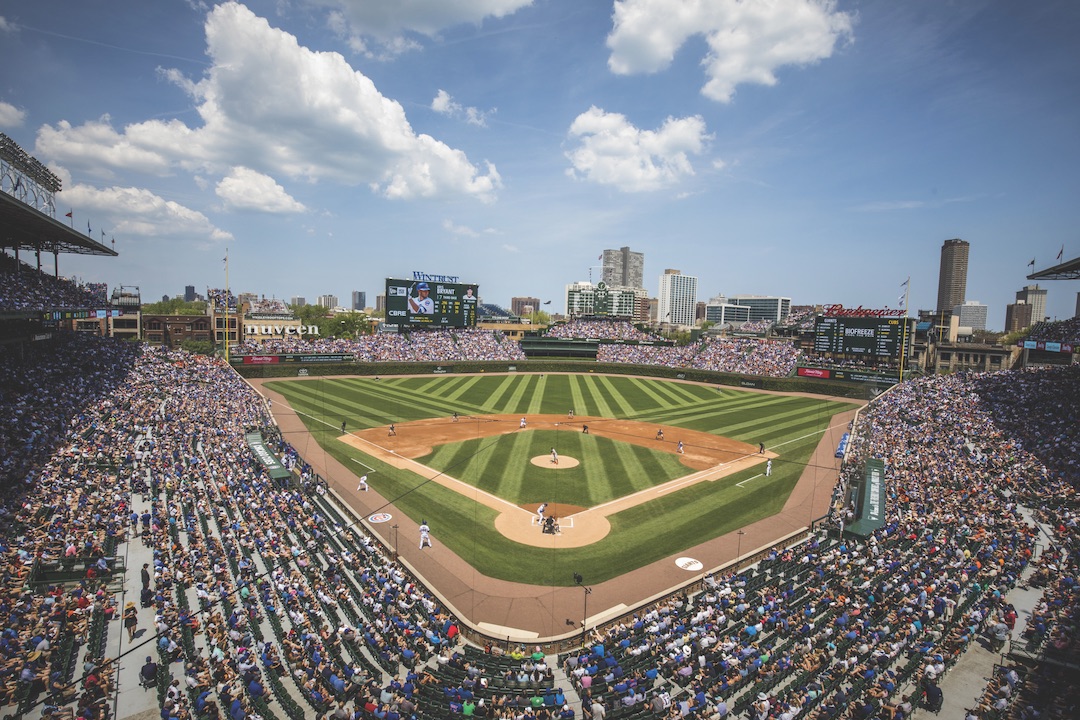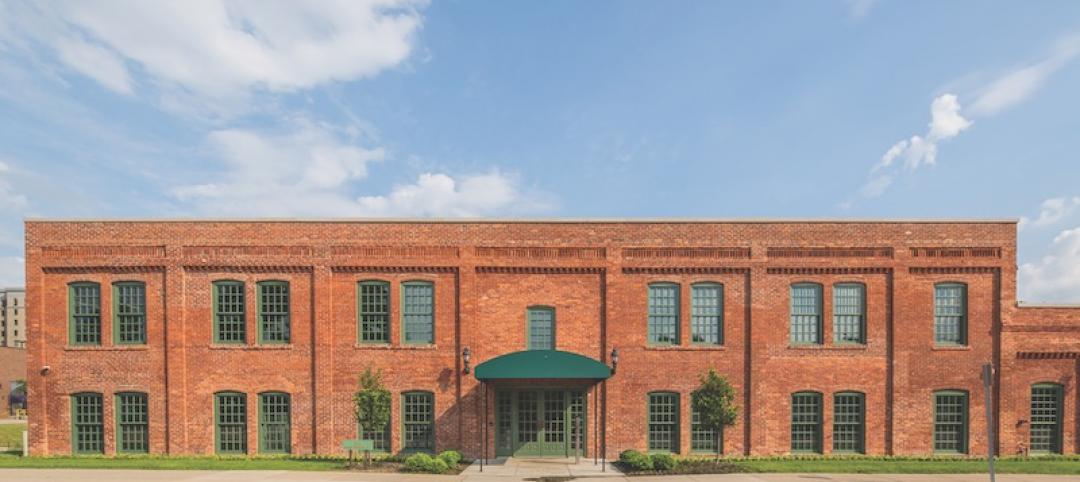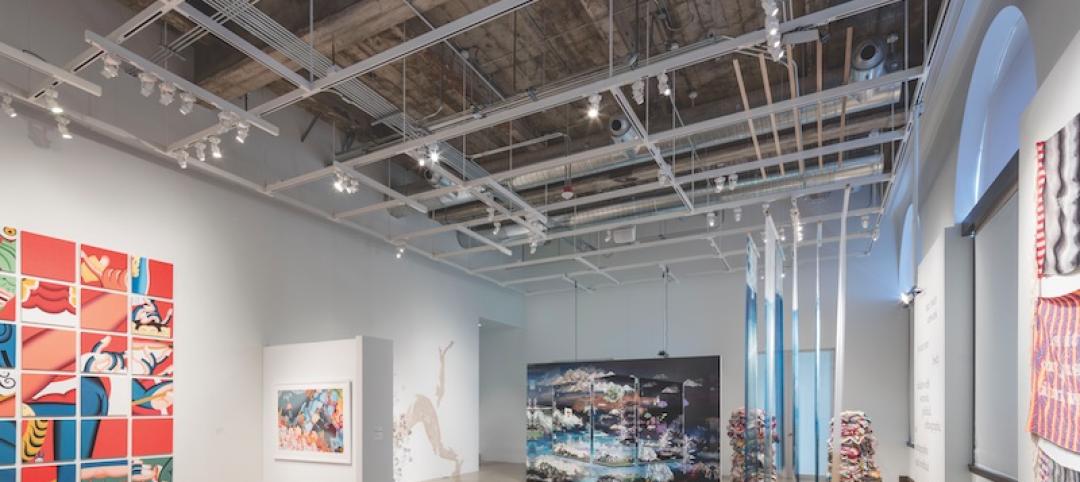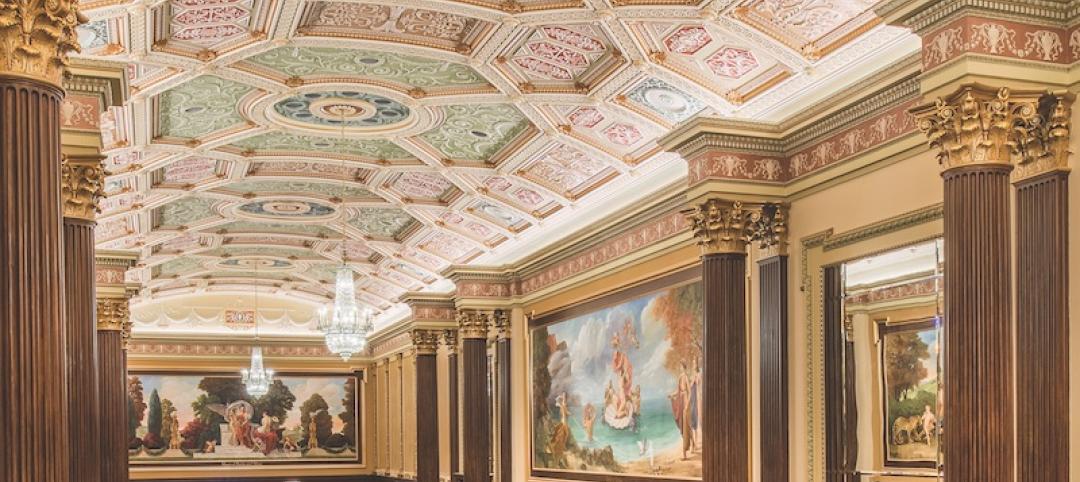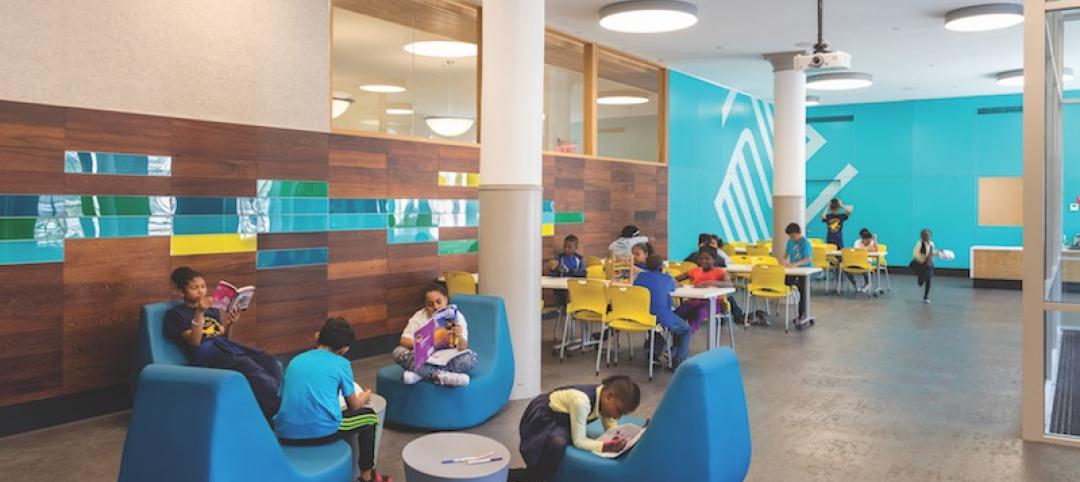Wrigley Field, the second-oldest baseball stadium in the country, opened in 1914. Soon after the Ricketts family purchased the ballpark and its main tenant, the Chicago Cubs, in 2009, plans were set in motion to significantly upgrade the deteriorating structure, expand the facility, and enhance its amenities.
The project was ambitious, and the list of improvements extensive: improving the building’s foundation, restoring and reinforcing the core structure, rebuilding the bleachers, restoring the historic marquee, reconstructing the façade, upgrading player facilities, adding premier clubs and fan amenities, improving concession and restroom availability, installing new digital outfield signage and video boards, adding modern media facilities, and converting the parking lot into a plaza and six-story office building with a new underground clubhouse.
All of this was accomplished over a five-year period during the 20 to 26 weeks per year of off season, many of those weeks in frigid weather conditions. In 2018, the project team reorganized the remaining work and expedited the schedule by one year, which meant that nearly half of the overall project volume had to be completed in the last two years.
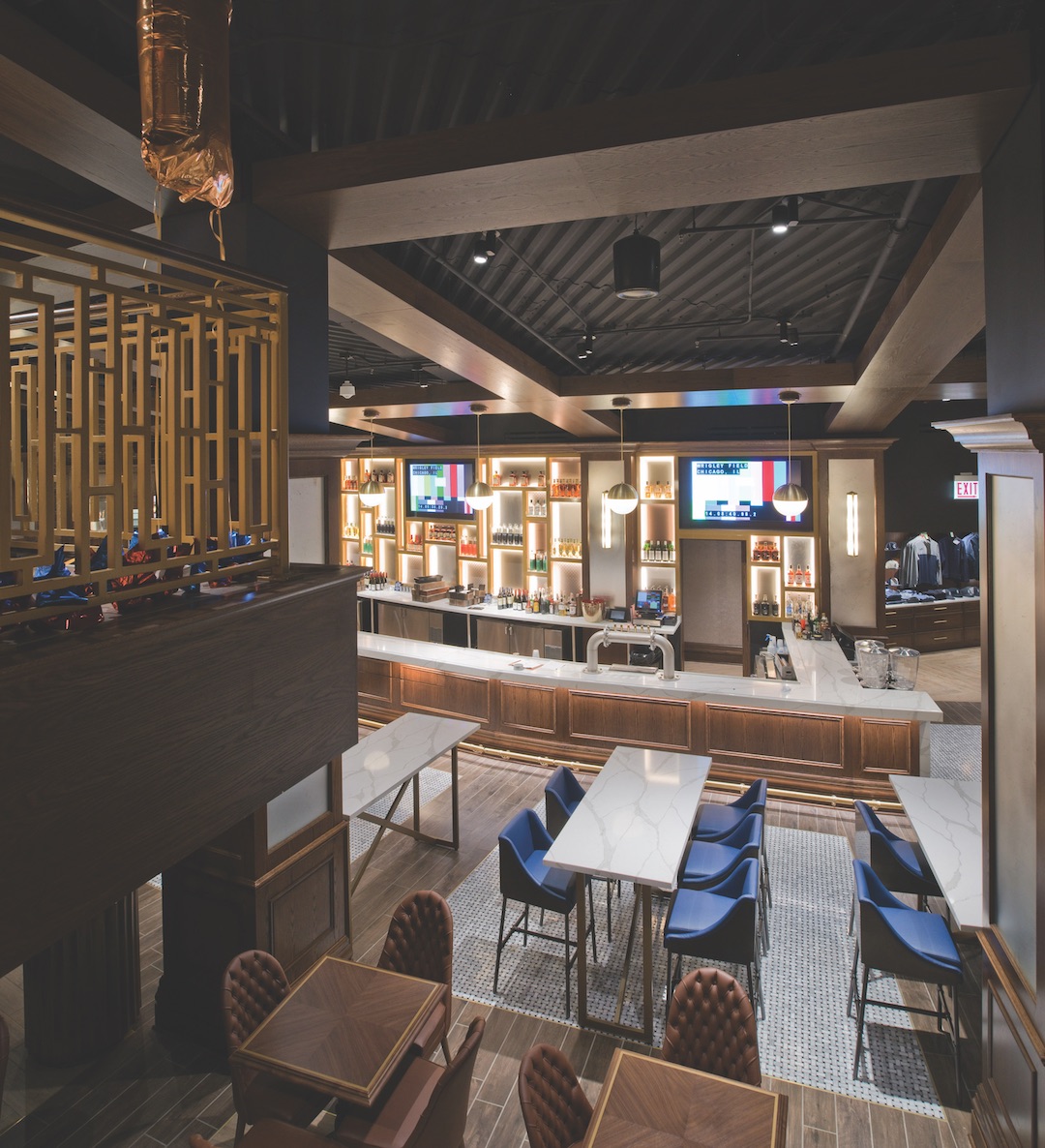 The ceiling of the 1914 Club under home plate has a ribbed metal underlayment that will drain any condensation to the edges to prevent water damage to the room.
The ceiling of the 1914 Club under home plate has a ribbed metal underlayment that will drain any condensation to the edges to prevent water damage to the room.
Planning under such constraints was critical. This project required eight years of preconstruction that didn’t end until the final phase of construction began last year. When considering the basement and new Cubs clubhouse under the former parking lot, the team explored more than 50 different sizes, layouts, and configurations, as well as associated structural materials. Throughout the design and construction, the project team relied heavily on laser scanning and 3D modeling.
The most critical part of the project was strengthening the building’s foundation to accommodate the planned expansion. Wrigley Field was essentially lifted onto stilts while the foundations and column supports were restored, vastly augmenting the ballpark’s foundational load capacity. Pepper Construction, the project’s GC, sunk four micropiles at each of the “F” line major columns to a depth of 100 feet under each column before welding on a new zero-tolerance column base. Each micropile could withstand 500,000 pounds of force; one micropile is strong enough to hold the 225-ton Statue of Liberty.
See Also: 2019 Reconstruction Awards: Betting on a city's future
Among the key elements of the stadium’s restoration, which required considerable re-engineering, was the Concourse, which loops around Wrigley Field beginning in the main grandstand and through the bleachers. A detailed sequence was developed to restore and expand the 40,000-sf mezzanine across the ballpark and two serpentine walkways while simultaneously repairing the underbelly of the ballpark’s concrete structure. A massive, 400-foot-long by eight-foot-tall grade beam, sitting on more than 90 micropiles along the western edge of the ballpark, was installed to redistribute the expanded load of the upper level concourse and stabilize soil conditions between the ballpark and the plaza.
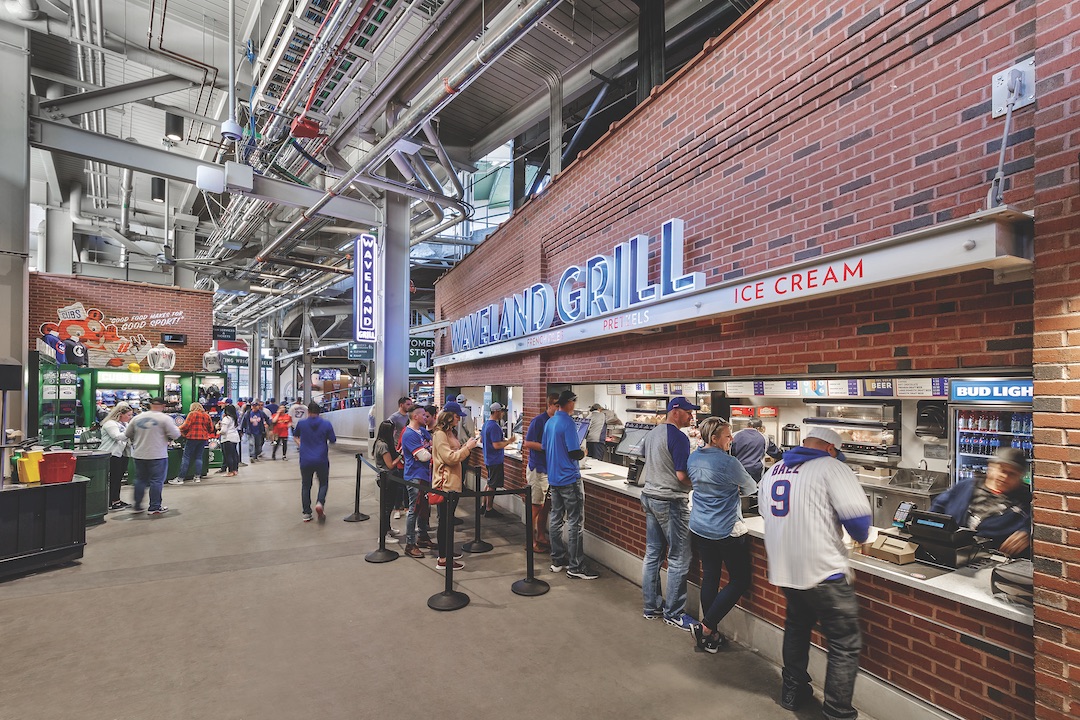 The restored concourse (below) would not have been possible without the project team’s colossal efforts to improve Wrigley Field’s antiquated structural system.
The restored concourse (below) would not have been possible without the project team’s colossal efforts to improve Wrigley Field’s antiquated structural system.
Each year during construction periods, the concourse walkway had to be ripped out to work on below-grade areas that house mechanicals, plumbing, AV equipment, and underground utilities. Once the underground work was completed, the overhead piping could also be reconstructed.
The entire exterior ballpark façade was restored to the glory days of the 1930s. The original brick features, sunburst-patterned steel grille work, and the restored historic marquee were reintroduced. The stucco and clay tile and terra cotta roofing covered the entire ballpark façade, including the expanded left- and right-field terraces.
Added to Wrigley was Gallagher Way plaza, a new six-story, two-basement facility adjacent to the ballpark. The first two floors provide retail space, the third floor is for conference rooms, and floors 4-6 serve as the Cubs’ offices. A new 30,000-sf clubhouse, located outside the ballpark under the plaza, provides the players with the best-in-class off-the-field facilities needed to train, rehabilitate from their injuries, and prepare for games.
Platinum Award Winner
BUILDING TEAM Pepper Construction (submitting firm, GC) The Ricketts Family (owner) CAA ICON (owner’s representative) Populous, Stantec (architects) Thornton Tomasetti (SE) ME Engineers (ME) Terra Engineering (CE) Details 970,000 sf Total cost Confidential at owner’s request Construction time October 2014 to April 2019 Delivery method CM at risk
Related Stories
Reconstruction Awards | Nov 27, 2017
The birthplace of General Motors
The automotive giant salvages the place from which it sprang, 131 years ago.
Reconstruction Awards | Nov 21, 2017
Mama mia! What a pizzeria!: It started as a bank nearly a century ago, now it’s a pizza parlor with plenty of pizzazz
The first floor features a zinc bar and an authentic Neapolitan pizza oven.
Reconstruction Awards | Nov 21, 2017
Honor Guard: San Francisco’s historic Veterans Building pays homage to those who served in World War I and other foreign wars
The Veterans Building houses the War Memorial staff, the city’s Arts Commission, the Opera’s learning center and practice/performance node, the Green Room reception venue, and the 916-seat Herbst Theatre.
Reconstruction Awards | Nov 20, 2017
Eyes wide open: Students can see their new home’s building elements
The two-phase project revamped an opaque, horseshoe-shaped labyrinth of seven buildings from the ’60s and ’70s.
Reconstruction Awards | Nov 17, 2017
Gray lady no more: A facelift erases a landmark’s wrinkles, but not her heritage
The Building Team restored the granite and terra cotta façade and reclaimed more than 500 double-hung windows.
Reconstruction Awards | Nov 17, 2017
Elegance personified: New life for a neglected but still imposing retail/office space
The building was in such disrepair that much of the reconstruction budget had to go toward structural, mechanical, and electrical infrastructure improvements.
Reconstruction Awards | Nov 16, 2017
Back to the '20s: Coney Island gets a new eatery reminiscent of the past
This project included the restoration of the landmark Childs Restaurant.
Reconstruction Awards | Nov 15, 2017
Foyer fantastique: Faded images provide the key to a historic theater's lobby restoration
The restoration relied heavily on historic photos and drawings.
Reconstruction Awards | Nov 14, 2017
Hallowed ground: A Mormon temple rises from the ashes of a fire-ravaged historic tabernacle
Parts of the tabernacle’s exterior shell were the only things that survived the blaze.
Reconstruction Awards | Nov 13, 2017
Harlem Renaissance: A vacant school provides much-needed housing and a clubhouse for children
Word that PS 186 might be demolished brought out the preservationists, whose letter-writing campaign gained the support of the New York Landmarks Conservancy.


